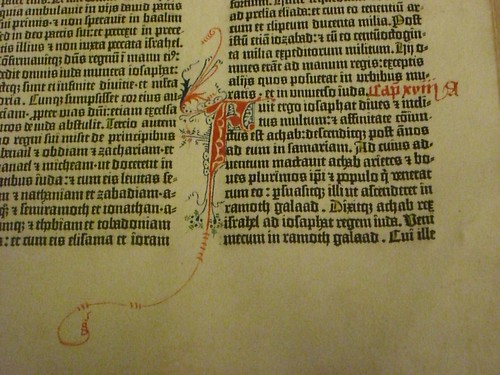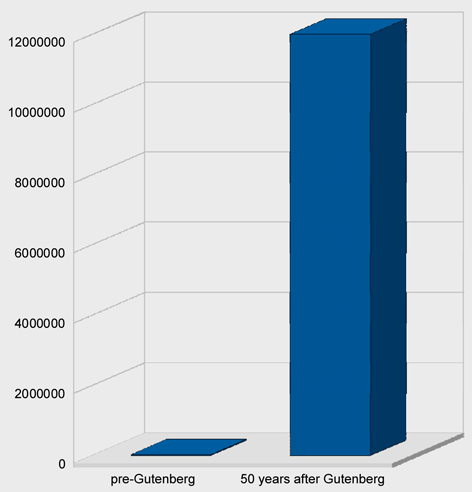A strident defense of mediocre formatting
In addition to a gratuitous (and entertaining) swipe at “noisome” DITA “fanboys,” Roger Hart argues that we need to reconsider the disadvantages of automated formatting:
The thing is, [separation of content and formatting has] all been taken rather stridently to heart in certain quarters, leading to a knee jerk reaction whenever author-controlled formatting/pagination/lineation is mentioned as anything other than bleak, sulphurous devilry. This is twaddle. […]
Uncertainty in meaning is anathema to user intelligibility. If we’re going to make sure we’re not writing poetry, there’s definitely value in having poetry’s level of control over semantic blocks.
Of course, it’s fully possible that this is an expensive distraction.
Possible? It’s definitely expensive. It’s possible that it’s a distraction.
I think Hart perhaps unintentionally put his finger on the real issue: value. How much value (in the form of improved comprehension) is added to a technical document when you are able, in the words of commenter Brian Harris, to “lovingly handcraft” each page?
How much value (in the form of cost avoidance) is added to an organization when you are able to spit out a reasonably formatted document in a few minutes?
Actually, I have a different question. How far should we take this argument? Here’s an example of the pinnacle of handcrafting:

Compared to the Book of Kells (above), the Gutenberg Bible looks quite pedestrian:

You can just imagine the scribes with their quills, lapis, gold leaf, and other implements muttering, “That Gutenberg and his noisome fanboys. He can’t even render two colors without our help. Poser. It’ll never last.”
Formatting automation removes cost from the process of creating and delivering content. For technical documents that change often and are perhaps delivered in multiple languages, it removes a lot of cost. Let’s assume that handcrafted pages can improve ease of reading and comprehension with careful copy-fitting and adjusted spacing (Hart’s article mentions “headings, line breaks, intra-word, etc”). This increases the cost of the content.
What happens when content is expensive? Fewer people get to see it.
I think we can all agree that e-books offer none of the typographic sophistication in question here. Bill Gates (yes, that Bill Gates) wrote in 1999:
It is hard to imagine today, but one of the greatest contributions of e-books may eventually be in improving literacy and education in less-developed countries. Today people in poor countries cannot afford to buy books and rarely have access to a library.
Essentially, we can produce documents inexpensively and give more people access to them as a direct result of lower cost, or we can climb on our typographic high horse and whine about word spacing.
I’m with the noisome fanboys.




Larry Kunz
Well said, Sarah. Except in poetry, a good writer should never have to rely on spacing and typography to convey meaning. And that’s even assuming that every member of the target audience will understand the meaning intended.
Roger refers to DITA as “an XML schema that thinks it’s a religion.” Maybe we in the DITA community need to dial back the evangelical zeal and stress that it’s simply good business. After all, technical communication is business. “Lovingly handcrafted” is what we do off-hours.
Erin Vang
An important point well made, Sarah. You go!
If I had a nickel for every manually-inserted page break that did nobody any good, I would be camping today instead of working.
Heck, if I had a dollar for all the localization so-called “DTP experts” who were the ones insisting on inserting those manual line- and page-breaks and insisting that certain categories of font changes were essential (they weren’t, they were just ugly), I would be camping someplace exotic today.
The saddest thing of all is that most of the tedious, time-consuming, error-prone, delay-intensive manual formatting busy-work that I’ve had to just about break fingers to prevent could more easily, effectively, and aesthetically-pleasingly have been accomplished with approximately one day devoted to reading the manual per DTP “expert.”
Why knowing about the most basic of DTP features is considered optional among people who call themselves DTPers is beyond me.
Which is why at the beginning of every l10n project, I’ve insisted on spending some time with the DTP staff to teach them the basics of the tools that their employers haven’t supported their learning.
Which is my sneaky segue into the real crime of the localization industry: that many of the most respected vendors are operating sweatshops.
Erin Vang
OK, I couldn’t help it. I had to write a rant on my own blog at http://globalpragmatica.com.
Ethan Duty
A good design is imperative to the convenience and comprehension of information, but what makes a design “good” depends greatly on the audience. Content tailored to the ideal for one group is unintentionally less accessible to others.
The benefits of lovingly handcrafting your documentation are irrelevant if your documentation must be 508 compliant or localized.
Poetry is written by an author for the love of art. Technical documentation is written expressly for use by others and must be accessible to the largest audience possible.
Paul K. Sholar
“Lovingly handcrafted” is as much of a straw man as is rhetoric about “topic-based, context-independent, and fully reusable content”.
Reducing tech pubs costs is the point, not maximizing the audience. I also don’t know of *any* technical document that is intended to be read by *everyone* on Earth. Reaching and communicating well to the document’s intended audience is the goal. Another straw man.
Tech communication programs perhaps have done a poor job in education TCers about the hierarchy of conventions (letter to phrase to sentence to paragraph to topic to page to section to document) found in any kind of textual content. Most of those conventions can be embedded in a cost-effective manner in the templates used by DTP tools that pre-dated XML.
It is the practitioners on the WWW that are attempting to swallow up the existing conventions for all textual content and “repurpose” them to suit today’s capabilities of their HTTP servers.
Many kinds of content will continue to be disseminated on paper. Instantiation on paper puts certain constraints on content design. Those constraints needs to continue to be taught and learned, even by those who will never design or author a traditional book. Why? Because the principles that were developed over 500 years serve a purpose that still hasn’t gone away.
Paul K. Sholar
I’m also a FrameMaker bigot.